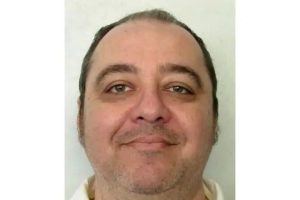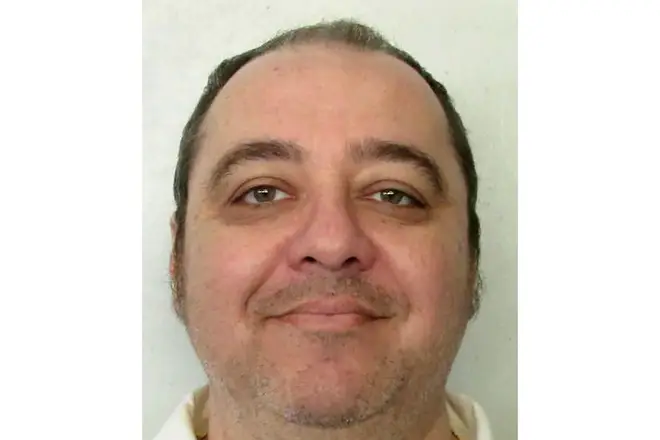
Kenneth Eugene Smith, who became the first US prisoner to be executed by nitrogen gas on Thursday night, told his family he loved them before he was killed.
Smith, who was convicted for a 1988 murder, lost two last-ditch appeals to halt his execution in the southern state of Alabama on Thursday.
The 58-year-old had a final meal of a T-bone steak, hash browns, eggs, and brown sauce from the Waffle House chain before he was put to death.
Smith told reporters before the fatal dose was administered: “Tonight Alabama causes humanity to take a step backwards.
“I’m leaving with love, peace, and light. Thank you for supporting me. Love all of you”. He made a heart sign to his wife.
As the nitrogen gas began to flow into Smith’s mask, he smiled and nodded towards his family before signing “I love you,” witnesses said.
He had been sentenced to death for killing preacher’s wife Elizabeth Sennett, in a murder-for-hire plot.
Smith’s legal team argued that nitrogen hypoxia was an “untested” method of execution, and constituted a cruel and unusual punishment. The appeals failed.
He was executed Holman Correctional Facility in Atmore on Thursday, being pronounced dead at 8:25pm local time (12.25am UK time)
The state had already tried to put Smith to death by lethal injection two years ago but the attempt failed as the executioners were unable to raise a vein before their death warrant expired at midnight.
Nitrogen hypoxia is a new method of execution that has been introduced in Alabama alongside two other states due to difficulties in procuring the drugs typically used in lethal injections.
Witnesses of his death reported Smith writhing between two to four minutes, followed by around five minutes of heavy breathing before he was pronounced dead.
His execution by nitrogen made him the first person in the world to be put to death by this method, according to the Death Penalty Information Center.
His spiritual adviser labelled the execution “disgusting”, claiming he struggled for minutes.
“A great evil was unleashed on the state of Alabama tonight,” Reverend Jeffrey Hood said.
The state had said before the execution Smith would become unconscious within seconds and would die within minutes.
Speaking after his execution, Alabama Governor Kay Ivey, confirmed Smith’s death.
She said: “After more than 30 years and attempt after attempt to game the system, Mr Smith has answered for his horrendous crimes.
“I pray that Elizabeth Sennett’s family can receive closure after all these years dealing with that great loss.”
While Ms Sennett’s son, Charles Sennett Jr., told local media: “Some of these people out there say, ‘Well, he doesn’t need to suffer like that.’ Well, he didn’t ask Mama how to suffer?” said Sennett.
“They just did it. They stabbed her — multiple times.”
Alabama Corrections Commissioner John Hamm said Smith’s shaking appeared to be involuntary movements and all the side effects had been “expected” based on their research.
“Nothing was out of the ordinary from what we were expecting,” he said.
The Alabama Department of Corrections shared the details of Smith’s final 48 hours before his execution.
They said he was visited by family, two friends, his spiritual adviser and his attorney.
He had a breakfast of two biscuits, eggs, grape jelly, applesauce and orange juice.
His final meal was T-bone steak and eggs with hash browns.
Justice Sonia Sotomayor wrote ahead of his death: “Having failed to kill Smith on its first attempt, Alabama has selected him as its ‘guinea pig’ to test a method of execution never attempted before.
“The world is watching.”
Smith was one of two men convicted of murdering Ms Sennett, 45, in a murder-for-hire plot for $1,000 each in 1988.
Smith and his fellow hitman, John Forrest Parker, beat Ms Sennett with a fireplace implement and stabbed her in the chest and neck. Her death was staged to look like a home invasion and burglary.
Parker was executed in 2010.
The pair were brought in by Ms Sennett’s husband, a debt-laden preacher who wanted to collect insurance money. He later went onto kill himself amid investigations.
Smith admitted to being present at the time of Ms Sennett’s death but denied being the one to carry it out.
The jury made a recommendation for a life sentence but the judge overruled the recommendation, instead sentencing him to death.
By Kit Heren@yung_chuvak






